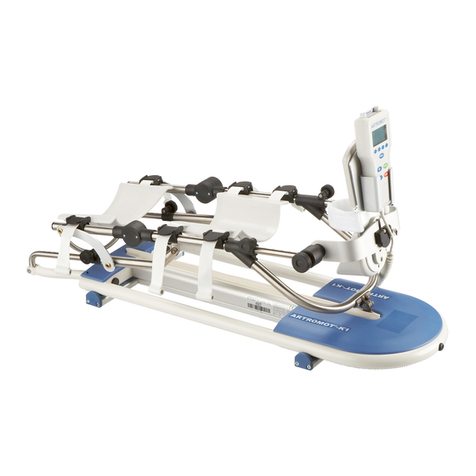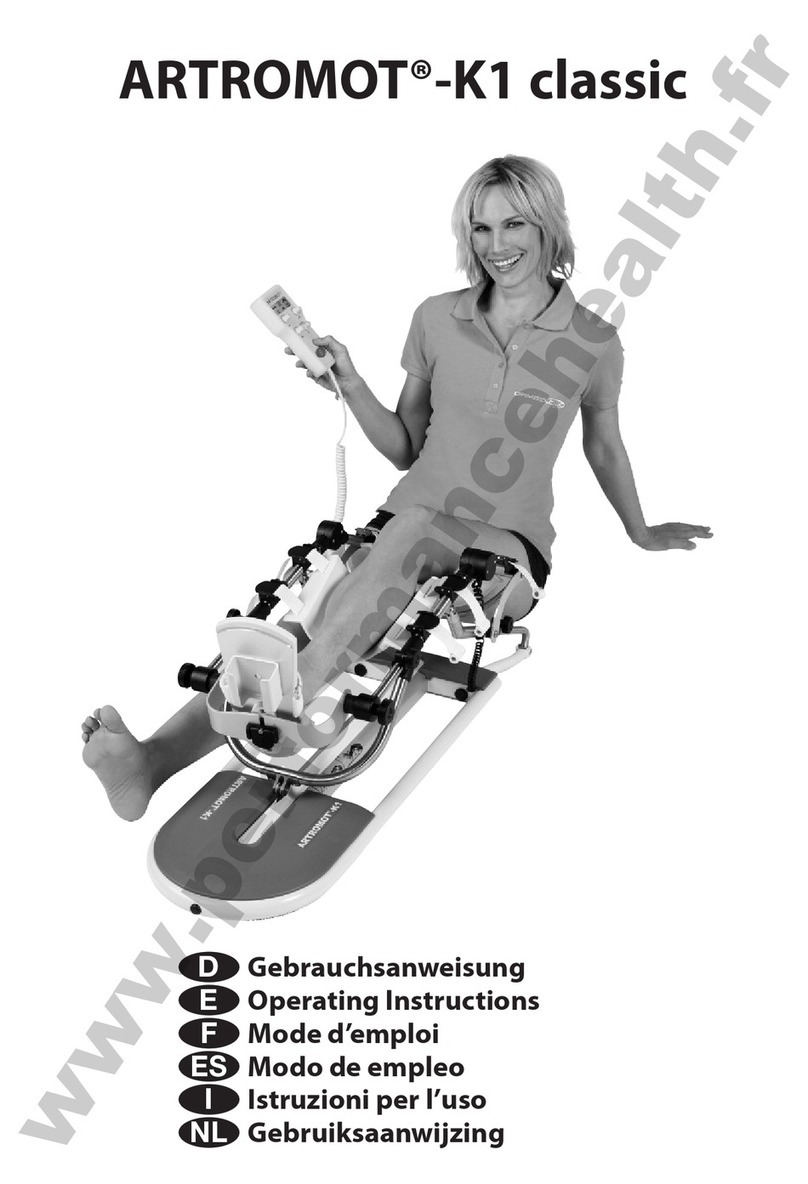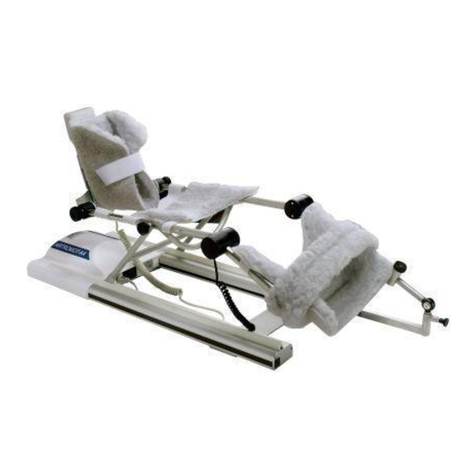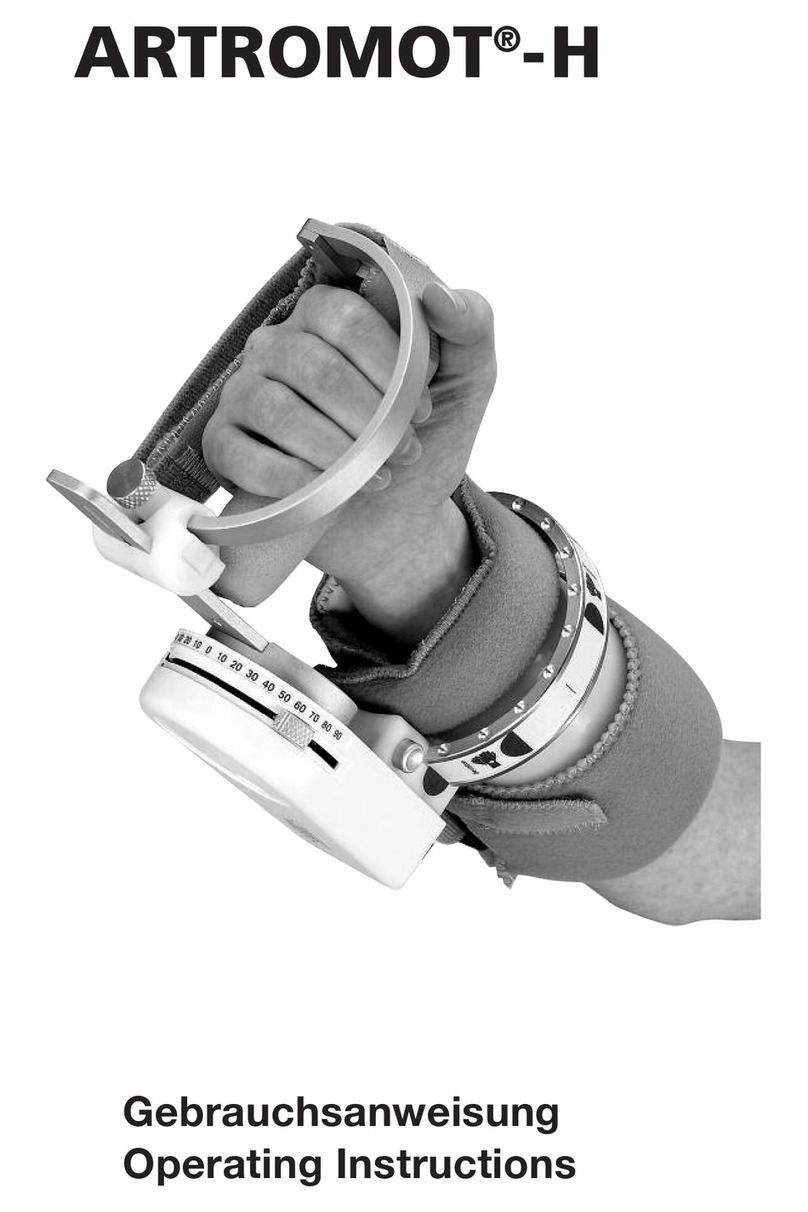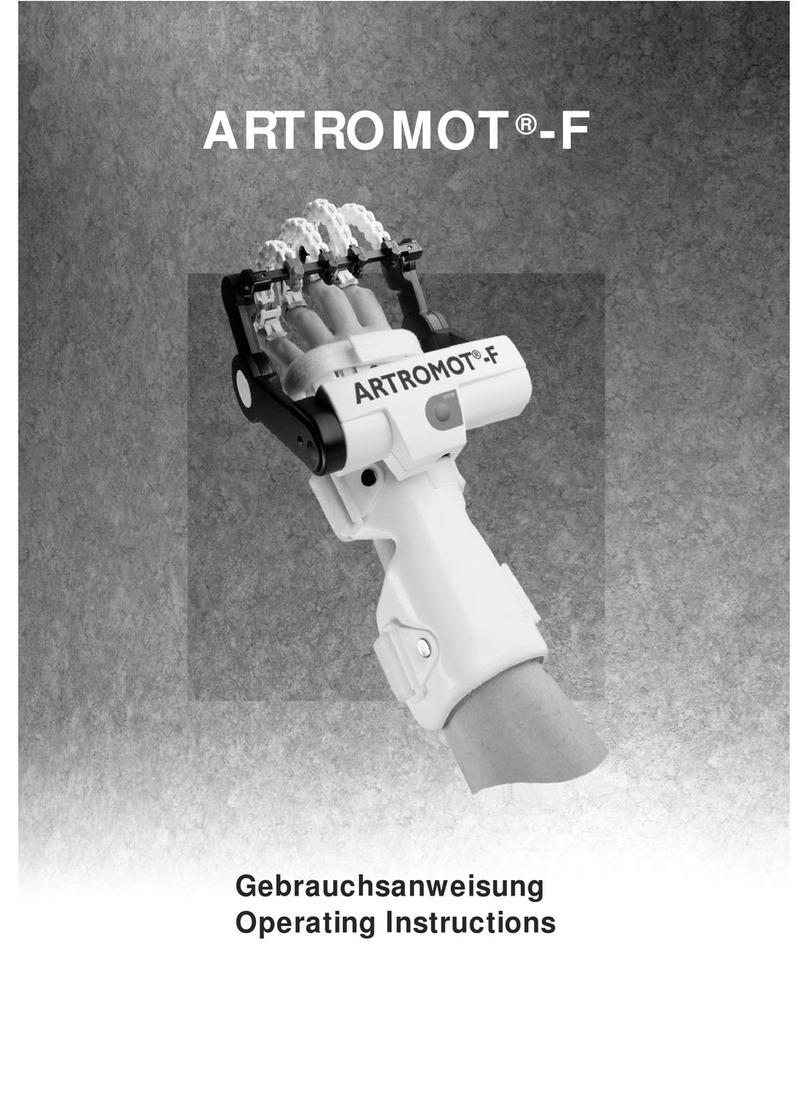
5
ARTROMOT®-K4 is a motor-operated
Continuous Passive Motion (CPM)
device providing motion to the shoulder
joint.
Suitable for use in hospitals, clinics,
general practices and rental services, it
is an important supplement to medical
and therapeutic treatment.
CPM therapy with ARTROMOT®-K4 is
mainly used to prevent the negative
effects of immobilization, to allow
patients to regain painless mobility of
joints at an early stage and to promote
healing and achieve a positive functio-
nal result.
Other objectives of therapy include
- improvement of joint metabolism
- prevention of joint stiffness
- promotion of the regeneration and
healing of cartilage areas and dam-
aged ligaments
- faster hematoma/fluid resorption
- improved lymph and blood circulation
- thrombosis and embolism prophylaxis
The CPM device is indicated in the
treatment of most injuries and diseases
of the knee and hip joints as well as in
the postoperative treatment after knee
and hip joint surgery. Examples
- joint distortion and contusion
- arthrotomy and arthroscopy proce-
dures in combination with synovec-
tomy, arthrolysis or other intra-articu-
lar interventions
- mobilization of joints in anesthetized
patients
- operative treatment of fractures,
pseudoarthrosis and corrective
osteotomy
- cruciate ligament replacement or
reconstruction
- endoprosthetic implants
Do NOT use ARTROMOT®-K4 on
patients with
- acute inflammatory processes in the
joints, unless on the order of a physi-
cian
- spastic paralysis
- unstable osteosynthesis
1.4 Contraindications
1.3 Indications
1.2 Therapy objectives
1.1 Fields of application
5
1. How to use the CPM device
A-MOT K4 GA engl DV2 801 23.01.2008 12:21 Uh Seite 5






